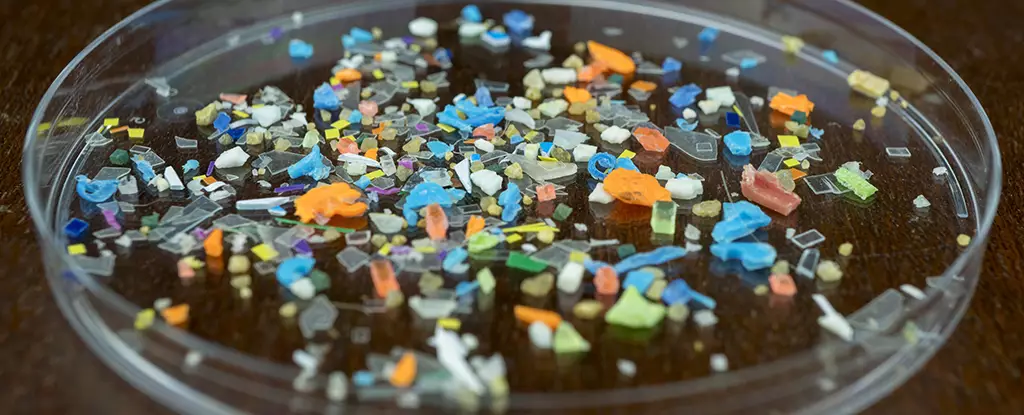Nanoplastics may seem like a trivial issue at first glance, but recent research sheds light on their alarming potential impact on human health. These minuscule plastic particles, primarily stemming from consumer products and environmental degradation, are infiltrating our ecosystems at an astonishing rate. The concept of nanoplastics invokes a sense of urgency, as they are not merely contaminating our environment—they are making their way into our bodies. Researchers from the National Cheng Kung University in Taiwan conducted a pivotal study that not only exposes the risks associated with nanoplastics but also raises critical questions about our understanding of health and the environment.
The study specifically examined polystyrene nanoplastics, measuring only 100 nanometers in size. For scale, that’s thousands of times smaller than a human hair, easily crossing biological barriers and infiltrating our systems. By administering these particles to mice over an extended period, the researchers were able to observe significant biological changes that could have profound implications for human health.
Disruption at the Molecular Level
The results of the study paint a worrying picture of how nanoplastics can interfere with gut health. Key findings revealed reductions in the production of proteins crucial for maintaining gut integrity, signaling a direct correlation between plastic exposure and gastrointestinal health. Specifically, proteins that help seal the gut lining became less prevalent, indicating that our bodies’ first line of defense against harmful microorganisms and toxins is at risk.
Moreover, changes in gut microbiota composition were similarly concerning. Beneficial bacteria like Lactobacillus saw declines, while harmful microbes such as Ruminococcaceae increased in abundance. This shift is more than an academic concern; it has tangible implications for our overall health, given the critical role of a balanced gut microbiome in digestion, immunity, and mental health.
Hsu emphasizes a critical aspect of the research: the way nanoplastics appear to interfere with microRNA communication between intestinal cells and gut bacteria. Such disruptions may lead to cascading effects that compromise our health. The study highlights a novel mechanism by which plastic particles can disturb the microbe ecosystem within our guts, resulting in detrimental outcomes that merit urgent attention.
The Limitations of Animal Studies and Real-World Implications
While the findings from this research provide a compelling narrative about the dangers of nanoplastics, one must exercise caution when extrapolating these effects to humans. Mice are often used as models for human physiology, but their biological processes do not align perfectly with ours. Furthermore, the concentration of nanoplastics administered in these studies far exceeds typical human exposure levels.
Nevertheless, the research emphasizes the necessity for continued investigation into how these tiny particles may manifest effects in human health. As we navigate a world increasingly inundated with plastic, understanding the extent of our exposure and its long-term implications is essential in crafting informed public health policies.
Yueh-Hsia Luo, an immunologist unconnected to the study, reinforces this notion by highlighting the need for technological advancements in detecting nanoplastics. Without robust detection methods, gauging levels of exposure accurately remains problematic, leaving a gap in our understanding of the risks posed.
A Call to Action: Rethinking Our Relationship with Plastics
This research serves as an eye-opener, compelling us to rethink our interactions with plastics. As consumers, we may take for granted the convenience offered by plastic products, but the potential health concerns associated with their disintegration into micro and nanoplastics cannot be overlooked. The implications extend beyond individual health; they touch upon environmental stewardship and sustainability.
There is an urgent need for a multi-faceted strategy to combat plastic pollution—from stricter regulations on plastic production and use to promoting biodegradable alternatives. Consumer awareness and education play vital roles in addressing this crisis, empowering individuals to make choices that favor a healthier environment and, by extension, a healthier population.
As we stand on the precipice of a major public health issue, it is our collective responsibility to engage with the facts presented today, advocate for comprehensive research, and actively participate in the call for systemic change. The potential health risks associated with nanoplastics should not only be acknowledged but acted upon.

